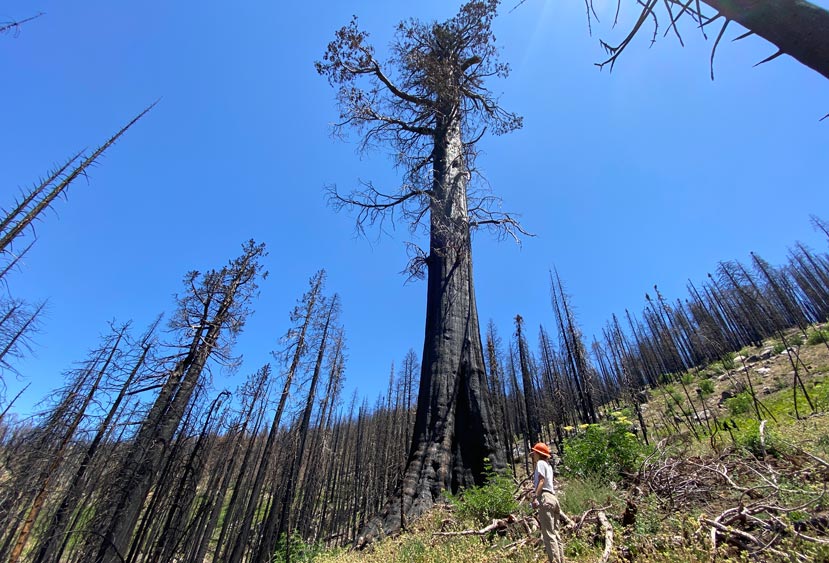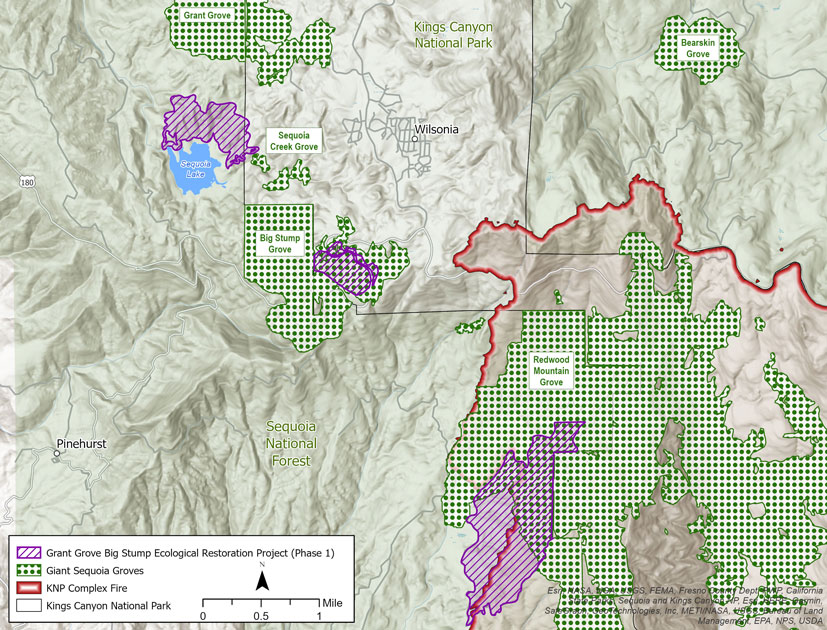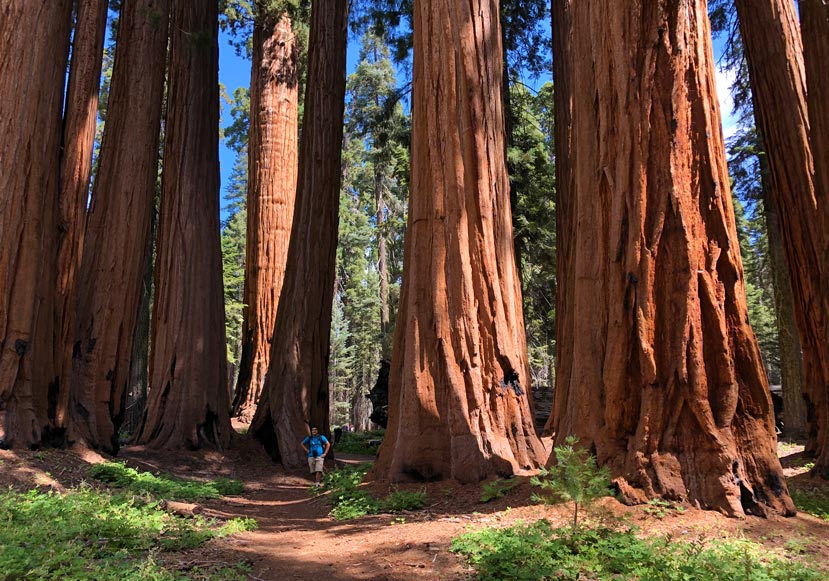
In the past two years, nearly 20 percent of all giant sequoias, the largest trees in the world that only grow naturally on the western slope of the Sierra Nevada, have been killed. Among those killed were many of the largest trees in each grove, called monarchs, that mostly died in the 2020 Castle Fire and the 2021 KNP Complex and Windy fires.
In an effort to help protect these iconic trees from future wildfire, the federal government recently initiated emergency fuel-reduction treatments on 13,000-plus acres of U.S. Forest Service land in and around 12 different giant sequoia groves. Scheduled to begin this summer and end in 2024, these emergency-response treatments will complement the Sierra Nevada Conservancy (SNC)-funded Grant Grove Big Stump Ecological Restoration Project, which will wrap up in early 2023.
“This implementation measure is an important milestone for our interagency partnership that supports forest resilience and the protection of giant sequoia groves, while also improving critical habitat for sensitive wildlife” said Jerry Keir, Executive Director of the Great Basin Institute, the nonprofit organization spearheading the project.
Wildfire risk reduced around several groves
By reducing fuels and fire threats on 1,044 acres within Kings Canyon National Park, Sequoia National Forest, and adjacent private lands, the Grant Grove Big Stump Ecological Restoration Project will help protect nearby communities, park infrastructure, and giant sequoias in the Grant and Big Stump groves.
“Our focus is to reduce surface fuels and standing dead fuel that have accumulated due to drought, bug kill and lack of regular natural fire events,” said Sequoia National Forest District Ranger, Jeremy Dorsey.

The project will remove excess fuels on 89 acres of National Park Service lands, 756 acres of Forest Service lands, and 199 acres of privately owned land, which will help protect the popular Sequoia Lake YMCA Camp. Barring any unforeseen circumstances, such as wildfire, the Great Basin Institute and its partners are expected to finish fuels-reduction work this spring.
The project will also introduce prescribed fire across most of the treatment areas to further enhance resilience and create the post-fire conditions ideal for giant sequoia regeneration.
“The objective of this understory prescribed burn is to continue reducing fuels while reintroducing fire into sequoia groves and the wildland urban interface, and protecting the remaining old forest habitat for wildlife,” Dorsey added.
Phase 2 will expand fuels reduction and prescribed fire treatments
Bolstering this work will be Phase 2 of the Grant Grove Big Stump Ecological Restoration Project, awarded by the SNC in December 2021. Under this new grant, the Great Basin Institute will clear fuels and implement prescribed fire on an additional 2,000-plus acres in and around giant sequoia groves and visitor infrastructure within Sequoia and Kings Canyon National Parks.
Phase 2 is expected to be completed in fall 2025. The Wildlife Conservation Board further leveraged SNC funds by awarding the Great Basin Institute an additional $1.6 million to treat four additional groves with prescribed fire and to replant giant sequoia that were lost in recent fires.

Future hopeful for giant sequoias
With bark that can be as thick as two feet, giant sequoias are naturally designed to withstand and benefit from wildfire. Due to extreme drought and an excessive buildup of fuel, wildfires have been harming and even killing these magnificent trees in recent years.
Efforts like the Grant Grove Big Stump Ecological Restoration Project, and the upcoming emergency treatments from the federal government, will hopefully reverse this trend, so monarchs and other giant sequoia can continue to reign over the Sierra Nevada—and the world.
